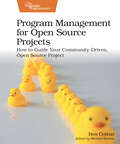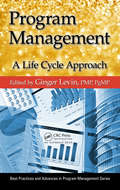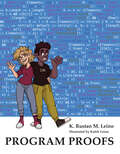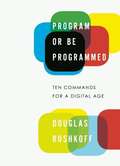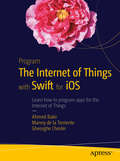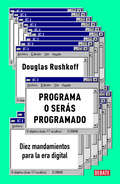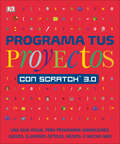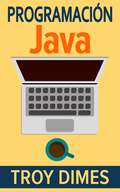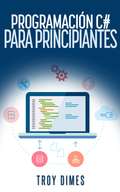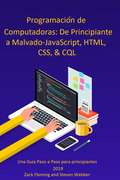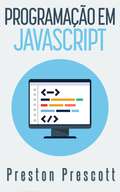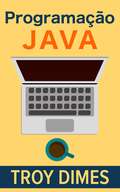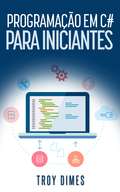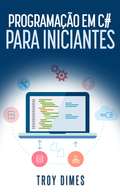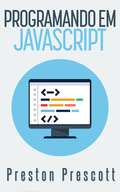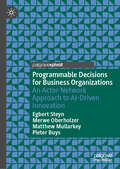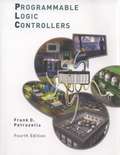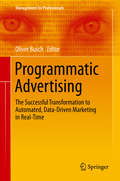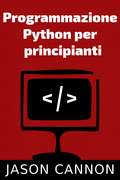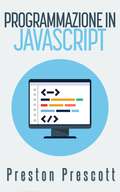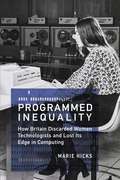- Table View
- List View
Program Management Leadership: Creating Successful Team Dynamics (Best Practices in Portfolio, Program, and Project Management #9)
by Mark C. BojeunThis is not another how-to guide for program managers or another reiteration of the Project Management Institute's standards for program management. Instead, Program Management Leadership: Creating Successful Team Dynamics examines various leadership approaches and illustrates the value of effective leadership styles in Program Management for
Program Management for Open Source Projects
by Ben CottonEvery organization develops a bureaucracy, and open source projects are no exception. When your structure is intentional and serves the project, it can lead to a successful and predictable conclusion. But project management alone won't get you there. Take the next step to full program management. Become an expert at facilitating communication between teams, managing schedules and project lifecycle, coordinating a process for changes, and keeping meetings productive. Make decisions that get buy-in from all concerned. Learn how to guide your community-driven open source project with just the right amount of structure. Bureaucratic processes naturally develop in large organizations, and open source projects are no different. The trick is to keep the processes intentional and in service of the project. That's program management and you have probably been doing it even if you don't have that title. Make your open source projects successful, predictable, and enjoyable by applying the principles and skills of program management in this book. See how program management differs from project management. Build trust and credibility by building relationships, sharing information, and communicating effectively. Construct efficient decision-making and governance structures, with openness and clear responsibilities. Conduct more effective and enjoyable meetings. Hold the right kind of meeting for the matters to be discussed: text, phone, video, or face-to-face. Develop release lifecycles, including release planning, schedules, and go/no-go decisions, and keep on schedule. Create and manage an effective changes process. Use your bug tracker to better understand and manage the bugs and feature requests of your project. Make decisions that get buy-in from all concerned. Develop processes that serve your open source project instead of making the project serve the process.
Program Management: A Life Cycle Approach (Best Practices In Portfolio, Program, And Project Management Ser.)
by Pmp Ginger Levin PgMPProgram management is a rapidly emerging offshoot of project management. So much so that AT&T, IBM, and other organizations, both large and small in all sectors, have initiated a push to certify program managers. And, although universities offer courses in program management, there are few books available to guide program managers through this
Program Proofs
by K. Rustan LeinoThis comprehensive and highly readable textbook teaches how to formally reason about computer programs using an incremental approach and the verification-aware programming language Dafny.Program Proofs shows students what it means to write specifications for programs, what it means for programs to satisfy those specifications, and how to write proofs that connect specifications and programs. Writing with clarity and humor, K. Rustan M. Leino first provides an overview of the basic theory behind reasoning about programs. He then gradually builds up to complex concepts and applications, until students are facing real programs using objects, data structures, and non-trivial recursion. To emphasize the practical nature of program proofs, all material and examples use the verification-aware programming language Dafny, but no previous knowledge of Dafny is assumed.Written in a highly readable and student-friendly styleBuilds up to complex concepts in an incremental manner Comprehensively covers how to write proofs and how to specify and verify both functional programs and imperative programsUses real program text from a real programming language, not psuedo codeFeatures engaging illustrations and hands-on learning exercises
Program or Be Programmed: Ten Commands for a Digital Age
by Douglas RushkoffThe author recognizes programming as the new literacy of the digital age and argues that the important question is, do we direct technology, or do we let ourselves be directed by it and those who have mastered it?
Program the Internet of Things with Swift for iOS
by Ahmed Bakir Gheorghe Chesler Manny TorrienteProgram the Internet of Things with Swift and iOS is a detailed tutorial that will teach you how to build apps using Apple's native APIs for the Internet of Things, including the Apple Watch, HomeKit, and Apple Pay. This is the second book by Ahmed Bakir (author of Beginning iOS Media App Development) and his team at devAtelier LLC, who have been involved in developing over 20 mobile projects. Written like a code review, this book presents a detailed "how" and "why" for each topic, explaining Apple-specific design patterns as they come up and pulling lessons from other popular apps. To help you getting up and running quickly, each chapter is framed within a working project, allowing you to use the sample code directly in your apps. The Internet of Things is not limited to Apple devices alone, so this book also explains how to interface with popular third-party hardware devices, such as the Fitbit and Raspberry Pi, and generic interfaces, like Restful API's and HTTPS. The Internet of Things is waiting -- be a part of it! What you'll learn How to use HealthKit to log and retrieve fitness information in your apps. How to use Core Motion to access the iPhone's built-in motion sensors. How to use WatchKit to build a watch face. How to use WatchKit to build an interactive watch app. How to take advantage of the advanced sensors on the Apple Watch. How to communicate with Bluetooth LE devices. How to communicate with iBeacons. How to communicate with a Raspberry Pi. How to use Keychain Services to encrypt data within your apps. How to use Touch ID to add fingerprint-based authentication to your apps. How to use Apple Pay to accept payments within your apps. Who this book is for Intermediate-level developers who have experience building iOS apps, but are looking to integrate Internet of Things API's into their apps. This book provides a tutorial-based approach that introduces advanced iOS topics as they come up and pulls in lessons from other popular apps. Table of Contents Part 1: Getting Started Chapter 1: Welcome to the Internet of Things Chapter 2: Introduction to the Swift Programming Language Chapter 3: Live Debugging with Xcode Part 2: Health Chapter 4: Logging and retrieving health information using HealthKit Chapter 5: Tracking activity using the iPhone's internal sensors Chapter 6: Integrating third-party fitness trackers using the Fitbit API Part 3: WatchKit Chapter 7: Building a static watch face Chapter 8: Building an interactive watch app Chapter 9: Advanced sensors and controls on the Apple Watch Part 4: Communicating with External Hardware Chapter 10: Connecting to a Bluetooth LE device Chapter 11: Building location awareness with iBeacons Chapter 12: Home automation using HomeKit Chapter 13: Building an app that talks to a Raspberry Pi Part 5: An Internet of Secure Things Chapter 14: Using Keychain Services to secure data Chapter 15: Using Touch ID for authentication Chapter 16: Using Apple Pay to accept payments
Program the Internet of Things with Swift for iOS: Learn How to Program Apps for the Internet of Things
by Ahmed BakirLearn how to build apps using Apple’s native APIs for the Internet of Things, including the Apple Watch, HomeKit, and Apple Pay. You'll also see how to interface with popular third-party hardware such as the Raspberry Pi, Arduino, and the FitBit family of devices.Program the Internet of Things with Swift and iOS is an update to the previous version and includes all new Swift 4 code. This book is a detailed tutorial that provides a detailed "how" and "why" for each topic, explaining Apple-specific design patterns as they come up and pulling lessons from other popular apps. To help you getting up and running quickly, each chapter is framed within a working project, allowing you to use the sample code directly in your apps.The Internet of Things is not limited to Apple devices alone, so this book also explains how to interface with popular third-party hardware devices, such as the Fitbit and Raspberry Pi, and generic interfaces, like Restful API’s and HTTPS. You'll also review new API's like Face ID and new design considerations, and look more closely at SSL and how to make IoT connected apps more resistant to hackers. The coverage of Apple Watch has been expanded as well. The Internet of Things is waiting — be a part of it!What You'll LearnUse Apple's native IoT Frameworks, such as HealthKit, HomeKit, and FaceIDInteract with popular third-party hardware, such as the Raspberry Pi, Arduino, and FitBitWork with real projects to develop skills based in experienceMake a smarter IoT with SiriKit and CoreMLWho This Book Is For The primary audience for this book are readers who have a grasp of the basics of iOS development and are looking to improve their Internet of Things-specific skills. Intermediate to Advanced level. The secondary audience would be business decision makers (managers, business analysts, executives) who are looking to gain a rough understanding of what is involved in Internet of Things development for iOS.
Programa o serás programado: Diez mandamientos para la era digital
by Douglas RushkoffDiez mandamientos para la era digital. El debate sobre si la red es buena o mala es irrelevante: la red está aquí para quedarse y si bien somos cada vez más conscientes de los muchos problemas que ha engendrado la era digital, lo que se requiere ahora es una respuesta humana a la evolución de estas tecnologías. Para Rushkoff es imprescindible empezar a codificar los cambios por los que estamos pasando y desarrollar un nuevo patrón ético, comportamental y comercial para guiarnos. Estamos viviendo un cambio de paradigma real y sin embargo tenemos escasa comprensión de lo que nos ocurre y de cómo superarlo. La verdadera pregunta que debemos plantearnos es, ¿dirigimos la tecnología, o nos dejamos dirigir por ella y aquellos que la han dominado? En el paisaje altamente programado en el que vivimos podemos crear el software o podemos ser el software; programar o ser programados. Hasta ahora, nos hemos limito a ser programados. Eneste pequeño y valioso libro Rushkoff ofrece tanto a los entusiastas cibernéticos como a los tecnófobos las pautas para navegar en este nuevo universo digital y recuperar el control de nuestras vidas.
Programa tus proyectos con Scratch 3.0: Una guía visual para programar animaciones, juegos, ilusiones ópticas, música (DK Help Your Kids)
by Jon WoodcockLos jóvenes más apasionados por la tecnología podrán empezar a familiarizarse con Scratch 3.0 gracias a esta guía de programación para principiantes.Aunque el mundo de la codificación está lleno de conceptos complicados, estos se volverán más sencillos y divertidos de aprender a medida que los programadores del futuro construyan sus propios proyectos usando Scratch 3.0, la última versión del lenguaje de programación más popular entre principiantes. Diseña un dinosaurio virtual o tu propia tarjeta de felicitación electrónica. Inventa tu propio juego o simulación, y crea gráficos alucinantes mientras descubres todas las cosas increíbles que un programador informático puede llegar a hacer con Scratch 3.0. Programa tus proyectos muestra cada paso visualmente para dividir la complejidad de la programación y convertirla en algo manejable, fácil de comprender, para que los proyectos más impresionantes puedan llegar a hacerse realidad. Perfecto para completos principiantes, este libro dará a los lectores más jóvenes un sólido conocimiento del mundo de la programación, preparándolos para crear sus propios proyectos desde cero e incluso llevándolos a otros lenguajes de programación más complejos como Python.
Programación Java - Una Guía para Principiantes para Aprender Java Paso a Paso
by Troy Dimes Andrés ParraudFecha de Publicación: 16 de Enero de 2015 Aprenda uno de los lenguajes de programación de computadoras más extensamente usado actualmente. Java es uno de los lenguajes de programación más extensamente usados actualmente. Una vez que aprendas cómo porgramar en Java, podrás crear programas de aplicación que funcionen en servidores, computadoras, tablets, teléfonos, reproductores Blu-Ray y más. ¡Escribe una vez, corre en todas partes! También, si quieres estar seguro que tu programa se comporta siempre igual independientemente del sistema operativo bajo el que esté corriendo, la filosofía Java "Escrito una vez, corre en todas partes" es para ti. Java fue diseñado para ser independiente de su plataforma, permitiéndote crear aplicaciones que corren en gran variedad de sistemas operativos, incluyendo Windows, Mac, Solaris y Linux. Esto es lo que aprenderás... Cómo preparar tu computadora para programar en Java (Fotos de pantalla incluidas). Convenciones de nombres de archivo Java. Cómo trabajar con varios tipos de datos, incluyendo enteros, de coma flotante, caracteres y booleanos. Qué variables hay y cuándo usarlas. Cómo efectuar operaciones matemáticas en Java. Tomar decisiones en tu programa en base a comparaciones. Otras formas de control de flujo de tu programa. Cómo manipular datos de texto. Todo sobre matrices - cómo crearlas, cuándo usarlas y más. Varias formas de efectuar las mismas acciones en tus programas sin repetirte. 3 tipos de bucles. Conceptos y técnicas de programación orientada a objetos, incluyendo clases, modificadores, métodos, herencia y polimorfismo. Formas de manejar con gracia errores que pueden ocurrir cuando alguien usa tus programas. Y más... Ejercicios prácticos incluidos que harán que Java haga "clic" en tu cabeza. Incluye un eje
Programación C# para Principiantes
by Troy Dimes Andrés ParraudComo agradecimiento por leer Programación C# para Principiantes, quiero darte una copia gratuita de "7 Little-Known C# Programming Tricks." ("7 Trucos de Programación C# Poco Conocidos"). Para descargar tu copia, visita: http://www.linuxtrainingacademy.com/7-tricks
Programación de Computadoras: De Principiante a Malvado—JavaScript, HTML, CSS, & SQL
by Zack Fleming Steven WebberInternamente, encontrarás una introducción a JavaScript, HTML, CSS y SQL. Estos son lenguajes de programación. Algunos de ellos se conocen como lenguajes de scripting. A partir de JavaScript, le presentaré los lenguajes de programación mencionados. Con suerte, al final de este libro, tendrá las respuestas a las preguntas de lo qué es y de lo qué puedes hacer con estos lenguajes. JavaScript es un lenguaje de programación que permite la implementación de elementos complejos en páginas web estáticas. Cada vez que miras una página web que hace algo además de mostrar información estática, es una suposición bastante segura hacer que JavaScript esté involucrado. A menudo se le conoce como la tercera capa del pastel. HTML es un lenguaje de programación relativamente simple que, en su núcleo, consiste en elementos. Estos elementos le permiten distinguir diferentes secciones de texto como diferentes aspectos de su página. Ya sea un párrafo, un encabezado, una columna o lo que se necesite, esto se logra con el uso de dichos elementos. Este lenguaje es también donde se obtiene la posibilidad de crear hipervínculos. El uso de hipervínculos es muy importante, especialmente cuando desea poder dirigir a alguien a una parte específica de su texto o página. CSS es un lenguaje de programación que se utiliza para diseñar y estructurar el diseño de una página web. Si desea cambiar la fuente, el color y el fondo, puede hacerlo agregando una animación o diseñando un esquema específico. Este es el lenguaje que usarás para lograr esas cosas. CSS utiliza el modelo de cuadro: la mayoría de los elementos se representan como un cuadro con el contenido, el relleno y los bordes se construyen como capas en una cebolla. Se debe comprender el modelo de caja antes de poder comenzar a entender cómo crear diseños CSS. Mientras tanto, SQL es un lenguaje de programación que está diseñado para trabajar con con
Programación en C# para Principiantes
by Maria Jimenez Troy DimesComo un gesto de agradecimiento por leer "Programación en C# para Principiantes", me gustaría regalarle una copia de "7 pequeños trucos de programación en C#" Para descargar la copia, visita el siguiente sitio: http://www.linuxtrainingacademy.com/7-tricks
Programando em JavaScript
by Preston Prescott Mayara ÁvilaDescrição: Cansado de tentar aprender a programar? Pronto para REALMENTE aprender a programar? Se você já tentou aprender a programar no passado mas não teve muito sucesso, dê uma chance ao livro "Programando em JavaScript". Ele lhe ensinará exatamente o que você precisa saber sobre programação na linguagem de script mais amplamente utilizada no mundo atualmente. Vai lhe instruir partindo do princípio e permitir seu desenvolvimento baseado naquilo que você aprendeu ao longo do caminho. Aprenda JavaScript uma vez, use muitas e muitas vezes! Apesar do JavaScript ser de longe a linguagem do lado cliente mais popular em uso atualmente, também pode e é usado do lado servidor. Node.js, Meteor, Wakanda, CouchDB e MongoDB são apenas alguns exemplos de onde você encontrará e poderá utilizar o JavaScript no lado servidor. O tempo que você investir aprendendo a utilizar o JavaScript pode ser duplamente recompensador, já que o JavaScript continua adentrando em outras áreas da computação. Se você está buscando alavancar sua carreira, JavaScript é uma inestimável habilidade para se ter. Há uma alta demanda por habilidades em JavaScript e a necessidade por pessoas que possam programar em JavaScript aumentará cada vez mais. Se você está buscando a inserção no mercado de trabalho, qual melhor habilidade para ter em seu currículo do que algo que pode ser utilizado praticamente em todo lugar? Quer trabalhar no "front-end" de sites? Aprenda JavaScript. Pronto para lidar com programação back-end para aplicativos web de rede intensiva? Aprenda JavaScript. Quer trabalhar com as mais recentes tecnologias em base de dados disponíveis atualmente? Então, aprenda JavaScript. Aprenda JavaScript da maneira certa - de uma vez por todas... Não importa se você planeja utilizar o JavaScript no lado cliente em um navegador, ou no lado servidor, ou mesmo em ambos; você
Programação Java
by Troy Dimes Marcio DominguesAprenda uma das linguagens de programação mais usadas nos nossos dias. Java é uma das linguagens de programação mais poderosas e amplamente utilizadas hoje em dia. Depois de aprender a programar em Java poderá criar aplicações que podem ser executadas em servidores, computadores pessoais, tablets, telefones, reprodutores de Blu-ray, entre outros. Escreva uma vez, execute em todo o lado! Além disso, se quiser garantir que os seus programas se comportam sempre da mesma forma, independentemente do sistema operativo onde são executados, a filosofia Java "write once, run anywhere" (Escreva uma vez, execute em todo o lado) aplica-se perfeitamente a si. O Java foi desenhado para ser independente de plataforma permitindo criar aplicações que são executadas numa grande variedade de sistemas operativos, incluindo Windows, Mac, Solaris e Linux. Eis o que poderá aprender com este livro... Como preparar o seu computador para programar em Java. (imagens incluídas) Convenções para atribuição de nomes em Java. Como trabalhar com vários tipos de dados incluindo Inteiros, números de vírgula flutuante, caracteres e booleanos. Que variáveis existem e quando as usar. Como executar operações matemáticas em Java Tomar decisões baseadas em comparações Formas de controlar o fluxo dos programas Como manipular texto Tudo sobre matrizes - Como as criar, como as usar e mais Várias formas de executar as mesmas ações sem ter que repetir código 3 Tipos de ciclos Conceitos e técnicas da programação orientada aos objetos incluindo classes, métodos, herança e polimorfismo. Formas de lidar com erros que podem ocorrer quando alguém usa os seus programas Mais... Incluídos exercícios práticos para ajudar a tornar a programação em java um passo simples para si. Inclui um exercício no fim de cada ca
Programação em C# Para Iniciantes
by Troy Dimes Roger Senna RosaO C# é simples e poderoso! O C# é uma linguagem orientada a objetos de propósito geral. Combine sua versatilidade com sua extensa biblioteca padrão, é fácil ver por que essa é uma linguagem de programação tão popular e respeitada. Crie aplicações gráficas, aplicativos para web, e mais. Quando você aprender a programar em C#, você poderá desenvolver aplicações web ou aplicações gráficas para desktop. Uma das melhores características do C# é a facilidade para ser aprendido... especialmente com esse livro. Essa é uma pequena lista com algumas das coisas que você aprende aqui... O que é um IDE e qual eu devo usar para desenvolver aplicações em C#. Como criar seu primeiro programa. Os vários tipos de dados do C#. Operadores... aritméticos, relacionais e lógicos. Como iterar um conjunto de itens, usando quatro tipos de loop diferentes. Formas de tomar decisões no seu código. Sobre a programação orientada a objetos. O que são objetos e classes. Tudo sobre métodos e modificadores de acesso. Tópicos avançados, como herança e polimorfismo. Como criar aplicações multi-thread, para tirar vantagem das CPU's com vários núcleos. E mais... Exercícios práticos inclusos, para ajudar no seu aprendizado do C#. Inclui exercícios ao final de cada capítulo (junto com a solução) para você praticar o que aprendeu. É ótimo para programadores iniciantes, e até para aqueles que já conhecem outras linguagens. Se você nunca programou antes, não se preocupe. Esse livro irá te guiar passo-a-passo em como criar sua primeira aplicação. Se você já tem alguma experiência em programação, então esse livro vai te ensinar alguns detalhes inerentes ao C#. Volte ao início da página e clique em "Comprar" e comece a aprender C# ainda hoje!
Programação em C# para iniciantes
by Troy Dimes Henrique HenningComo um agradecimento pela aquisição de Programação de C# Para Iniciantes, eu gostaria de oferecer uma cópia gratuita de "7 Little-Known C# Programming Tricks." Para baixar sua cópia, visite: http://www.linuxtrainingacademy.com/7-tricks
Programação em JavaScript. Um Guia da Linguagem de Programação JavaScript para Iniciantes
by Preston Prescott Fernando SouzaDescrição: Você está cansado de tentar aprender a programar? Está pronto para aprender realmente a programar? Se você já tentou aprender a programar no passado, mas não teve muito sucesso, então, dê uma chance ao livro "Programação JavaScript". Ele vai te ensinar exatamente o que você precisa saber sobre a linguagem de script de programação mais utilizada do mundo hoje. Ele vai começar pela base e permitir que você construa o seu conhecimento sobre o que você aprendeu ao longo do caminho. Aprenda JavaScript de uma vez e use-a muitas vezes ... Apesar do JavaScript ser, de longe, a mais popular linguagem de programação do lado do cliente em uso hoje, ela também pode e é usada no lado do servidor. Node.js, Meteoro, Wakanda, CouchDB e MongoDB são apenas alguns exemplos de onde você vai encontrar e ser capaz de usar JavaScript no lado do servidor. O tempo que você investir no aprendizado do JavaScript pode ser duplamente gratificante pois o JavaScript continua abrindo caminhos em mais e mais áreas da computação. Se você estiver buscando como subir de nível a sua carreira, o JavaScript é uma habilidade de valor inestimável para você dominar. As habilidades em JavaScript estão em alta demanda e a demanda por pessoas que possam programar em JavaScript só vai aumentar. Se você está procurando um trabalho técnico, então, que melhor habilidade para ter em seu currículo do que algo que pode ser usado em praticamente qualquer lugar? Quer trabalhar no "front-end" de sites? Então, aprenda JavaScript. Pronto para enfrentar a programação back-end para intensivas aplicações web de rede? Aprenda JavaScript. Quer trabalhar nas mais recentes tecnologias de banco de dados disponíveis atualmente? Então, aprenda JavaScript. Saiba JavaScript da maneira certa, de uma vez por todas ... Não importa se você planeja usar o JavaScript no lado do cliente em um na
Programmable Decisions for Business Organizations: An Actor-Network Approach to AI-Driven Innovation
by Pieter Buys Merwe Oberholzer Egbert Steyn Matthew MullarkeyThis book focuses on an integrated design sciences approach in developing an AI decision-support model to enhance an organization&’s decision-making function(s) and capabilities. In doing so, it elaborates on the programmability of decisions in the context of an AI culture (as embedded in the principles of Actor-Network Theory), and illustrates how AI technologies can bring profound societal changes, while balancing social and technical objectives given that AI cannot operate independent from human involvement. Research in the book spans multiple disciplines, drawing insights from academic literature and industry experts across various business functions, including finance, logistics, manufacturing, marketing, distribution, infrastructure, and technological development. With this, the book adopts an elaborated action design research (eADR) approach as its guiding framework, which employs a systematic, iterative approach for diagnosis and design to develop a decision-support model artifact in the context of programmable decisions. The empirical study included in the book involved data collection through interviews with senior managers, group discussions with middle management, and consultations with other industry experts.
Programmable Logic Controllers
by Dag H. HanssenWidely used across industrial and manufacturing automation, Programmable Logic Controllers (PLCs) perform a broad range of electromechanical tasks with multiple input and output arrangements, designed specifically to cope in severe environmental conditions such as automotive and chemical plants. Programmable Logic Controllers: A Practical Approach using CoDeSys is a hands-on guide to rapidly gain proficiency in the development and operation of PLCs based on the IEC 61131-3 standard. Using the freely-available* software tool CoDeSys, which is widely used in industrial design automation projects, the author takes a highly practical approach to PLC design using real-world examples. The design tool, CoDeSys, also features a built in simulator/soft PLC enabling the reader to undertake exercises and test the examples. Key features: * Introduces to programming techniques using IEC 61131-3 guidelines in the five PLC-recognised programming languages. * Focuses on a methodical approach to programming, based on Boolean algebra, flowcharts, sequence diagrams and state-diagrams. * Contains a useful methodology to solve problems, develop a structured code and document the programming code. * Covers I/O like typical sensors, signals, signal formats, noise and cabling. * Features Power Point slides covering all topics, example programs and solutions to end-of-chapter exercises via companion website. No prior knowledge of programming PLCs is assumed making this text ideally suited to electronics engineering students pursuing a career in electronic design automation. Experienced PLC users in all fields of manufacturing will discover new possibilities and gain useful tips for more efficient and structured programming. * Register at www. codesys. com www. wiley. com/go/hanssen/logiccontrollers
Programmable Logic Controllers (Fourth Edition)
by Frank D. PetruzellaThis fourth edition of Programmable Logic Controllers continues to provide an up-to-date introduction to all aspects of PLC programming, installation, and maintaining procedures.
Programmatic Advertising
by Oliver BuschThisfundamental guide on programmatic advertising explains in detail how automated, data-driven advertisingreally works in practice and how the right adoption leads to a competitive advantage foradvertisers, agencies and media. The new way of planning, steering and measuring marketing maystill appear complex and threatening but promising at once to most decision makers. Thiscollaborative compendium combines proven experience and best practice in 22 articleswritten by 45 renowned experts from all around the globe. Among them Dr. Florian Heinemann/Project-A,Peter Würtenberger/Axel-Springer, Deirdre McGlashan/MediaCom, Dr. MarcGrether/Xaxis, Michael Lamb/MediaMath, Carolin Owen/IPG, Stefan Bardega/Zenith,Arun Kumar/Cadreon, Dr. Ralf Strauss/Marketingverband,Jonathan Becher/SAP and many more great minds.
Programmazione Python Per Principianti
by Eugenia Franzoni Jason CannonSe volete imparare a programmare in Python ma non sapete da dove iniziare, continuate a leggere.Sapere dove iniziare quando si impara qualcosa di nuovo può essere un problema, soprattutto se l'argomento sembra così vasto. Ci possono essere così tante informazioni a disposizione che non si riesce nemmeno a decidere da dove iniziare, o peggio, si comincia ad imparare e si scoprono velocemente così tanti concetti, esempi di programmazione e dettagli che non vengono spiegati. Questo tipo di esperienza è frustrante e lascia con più domande che risposte.Programmazione Python per principianti non dà per scontato niente su quello che già conoscete della programmazione o del linguaggio Python. Non serve sapere niente per trarre beneficio da questo libro. Verrete guidati passo dopo passo usando un approccio logico e sistematico. A mano a mano che incontrerete nuovi concetti, codice e termini, questi verranno spiegati in linguaggio chiaro, rendendo semplice comprenderli per chiunque.Ecco cosa imparerete leggendo questo libro:Quando usare Python 2 e quando Python 3.Come installare Python su Windows, Mac e Linux, con gli screenshots.Come preparare il computer per programmare in Python.I vari modi di eseguire programmi Python su Windows, Mac e Linux.I migliori editor di testo e ambienti di sviluppo integrati per scrivere codice.Come lavorare con vari tipi di dato: stringhe, liste, tuple, dizionari, booleani ed altri.Cosa sono le variabili e quando usarle.Come fare operazioni matematiche in Python.Come prendere l'input utente.Come controllare il flusso dei programmi.L'importanza degli spazi in Python.Come organizzare i programmi, cosa va dove.Cosa sono i moduli, quando usarli e come crearne di vostri.Come definire e usare le funzioni.Importare le funzioni Python che si usano di frequente.Come leggere e s
Programmazione in JavaScript
by Simona Leggero Preston PrescottStanco/a di provare ad imparare come programmare? Pronto/a ad imparare DAVVERO come programmare? Se avete tentato di imparare come programmare in passato, ma non avete avuto molto successo allora date una possibilità a "Programmazione in JavaScript". Vi insegnerà davvero cosa vi serve sapere relativamente al linguaggio di script di programmazione più largamente utilizzato nel mondo ad oggi. Inizieremo dal principio e vi aiuteremo a costruire ciò che avete imparato durante il percorso. Imparare JavaScript una volta ed usarlo ancora ed ancora. Anche pensando che JavaScript è il più popolare linguaggio di programmazione lato clienti oggi, può essere usato anche dal lato server. . Node.js, Meteor, Wakanda, CouchDB, e MongoDB sono solo alcuni esempi di dove troverete e e sarete capaci di usare JavaScript dal lato server. Il tempo che investirete nell'apprendere JavaScript può essere rivisto doppiamente come tenere in movimento JavaScript in più e più aree dell'elaborazione. Se state cercando di avanzare nella vostra carriera, JavaScript è un'inestimabile conoscenza che dovete avere. Le competenze di JavaScript hanno un'alta domanda ed è necessaria per le persone che desiderano programmare in JavaScript. Se state cercando di interrompere un lavoro tecnico, quale competenza migliore nel vostro CV di qualcosa che può essere usato in modo pratico ovunque? Volete lavorare nel parte anteriore dei siti internet? Imparate JavaScript. Pronti ad affrontare la parte posteriore di programmazione per le reti intensive delle applicazioni internet? Imparate JavaScript. Volete lavorare alle ultime tecnologie in fatto di database disponibili oggi? Allora, imparate JavaScript. Imparate JavaScript nel modo giusto . una volta e per sempre. Nessun problema se pianificherete di usare JavaScript dal lato cliente in un browser, o dal lato server o entrambi, avrete bisogni di imparare il linguaggio. Questo è ciò c
Programmed Inequality: How Britain Discarded Women Technologists and Lost Its Edge in Computing
by Marie HicksIn 1944, Britain led the world in electronic computing. By 1974, the British computer industry was all but extinct. What happened in the intervening thirty years holds lessons for all postindustrial superpowers. As Britain struggled to use technology to retain its global power, the nation's inability to manage its technical labor force hobbled its transition into the information age. In Programmed Inequality, Marie Hicks explores the story of labor feminization and gendered technocracy that undercut British efforts to computerize. That failure sprang from the government's systematic neglect of its largest trained technical workforce simply because they were women. Women were a hidden engine of growth in high technology from World War II to the 1960s. As computing experienced a gender flip, becoming male-identified in the 1960s and 1970s, labor problems grew into structural ones and gender discrimination caused the nation's largest computer user -- the civil service and sprawling public sector -- to make decisions that were disastrous for the British computer industry and the nation as a whole.Drawing on recently opened government files, personal interviews, and the archives of major British computer companies, Programmed Inequality takes aim at the fiction of technological meritocracy. Hicks explains why, even today, possessing technical skill is not enough to ensure that women will rise to the top in science and technology fields. Programmed Inequality shows how the disappearance of women from the field had grave macroeconomic consequences for Britain, and why the United States risks repeating those errors in the twenty-first century.

